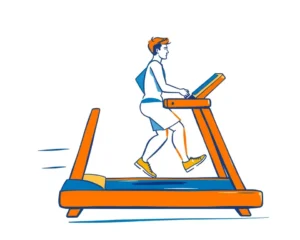Traditional therapy sessions, with their couches and clinical settings, can be intimidating or inaccessible for some. Recognizing this, mental health professionals are increasingly venturing into unconventional spaces like barbershops, boxing gyms, and fitness centers to provide care in more comfortable and approachable environments. These innovative approaches aim to break down stigmas, reach underserved populations, and promote holistic well-being.
The Barbershop as a Safe Space: Cutting Hair and Mental Health Stigma
For generations, barbershops have been more than just places to get a haircut; they’ve been community hubs, especially for men. Recognizing this, organizations like The Confess Project are training barbers to become mental health advocates. These barbers learn to recognize signs of mental health issues, offer support, and connect clients with professional resources.
Why Barbershops?
- Trust and Familiarity: Barbers often develop close relationships with their clients, creating a safe space for open conversation.
- Reduced Stigma: The informal setting can make it easier for individuals to discuss their struggles without feeling the pressure of a formal therapy session.
- Accessibility: Barbershops are often located in the heart of communities, making them accessible to people who may not otherwise seek mental health care.
- Cultural Relevance: For many men of color, barbershops are particularly important cultural spaces where they feel comfortable and understood.
Murdock London, for example, ensures every barber is mental health first aid trained, creating a safe space to combat the stigma surrounding mental health issues among men. Barbershops provide an important locale for informal mental health support with the potential for building social connections and linking to formal public mental health systems.
Boxing and Mental Health: Fighting for Emotional Well-being
Boxing, often perceived as an aggressive sport, is emerging as a powerful tool for improving mental health. Boxing therapy combines physical training with therapeutic techniques to help individuals manage emotions, build confidence, and process trauma.
How Boxing Helps:
- Stress Relief: The physical exertion of boxing can be a healthy way to release pent-up stress and emotions.
- Improved Mood: Exercise, including boxing, releases endorphins, which have mood-boosting effects.
- Increased Self-Esteem: Mastering boxing techniques and achieving fitness goals can boost self-confidence and self-worth.
- Mindfulness: Boxing requires focus and concentration, promoting mindfulness and reducing distractions.
- Trauma Processing: Boxing therapy can provide a safe and empowering environment for individuals to process and heal from trauma.
Empire Fighting Chance uses “Box Therapy,” combining non-contact boxing with therapy for young people, creating a safe space to explore feelings and behaviors. Boxing therapy can improve physical and mental health, reduce stress and anxiety, and provide a sense of community and empowerment.
Gyms as “Emotional Gyms”: Exercising Your Mental Health
While physical exercise has long been known to benefit mental health, the concept of a “mental health gym” is gaining traction. These gyms offer classes, support sessions, and exercises designed to improve emotional fitness and build coping skills.
Benefits of Gyms for Mental Health:
- Anxiety and Depression Reduction: Exercise has been proven to reduce symptoms of anxiety and depression.
- Mood Boost: Physical activity can elevate mood and increase feelings of well-being.
- Social Connection: Gyms provide opportunities to connect with others, reducing feelings of isolation and loneliness.
- Routine and Structure: Regular gym visits can provide a sense of routine and structure, which can be beneficial for mental health.
- Empowerment: Achieving fitness goals can empower individuals and increase their sense of control over their lives.
Nashville Psych refers to psychotherapy as “an emotional gym,” emphasizing the importance of consistent effort to improve mental well-being. In the gym, you might find workout buddies challenging you and cheering you on. In therapy, a supportive therapist and/or group members become your team. Recognizing that you’re not alone in your struggles is a powerful motivator.
Integrating Exercise and Therapy: A Holistic Approach
Research suggests that combining exercise with traditional mental health treatments like therapy and medication can enhance their effectiveness. Exercise can improve outcomes for patients with various illnesses and diseases. It can be used alone or combined with medication and/or psychological therapy. It has few side effects and does not have the stigma that some people perceive to be attached to taking antidepressants or attending psychotherapy and counseling.
Considerations:
- Exercise is not a replacement for therapy: While exercise can be a valuable tool for managing mental health, it’s not a substitute for professional treatment when needed.
- Individualized approach: The best approach to mental health care varies from person to person. It’s essential to find what works best for you, whether it’s therapy, exercise, medication, or a combination of these.
- Qualified professionals: When seeking mental health care in unconventional settings, ensure that the providers are qualified and experienced.
The Future of Mental Health Care: Community-Based and Holistic
The movement to integrate mental health care into community spaces like barbershops, boxing rings, and gyms represents a shift towards more accessible, destigmatized, and holistic approaches. By meeting people where they are and addressing their needs in a comprehensive way, these innovative models have the potential to transform mental health care and improve the well-being of individuals and communities.







